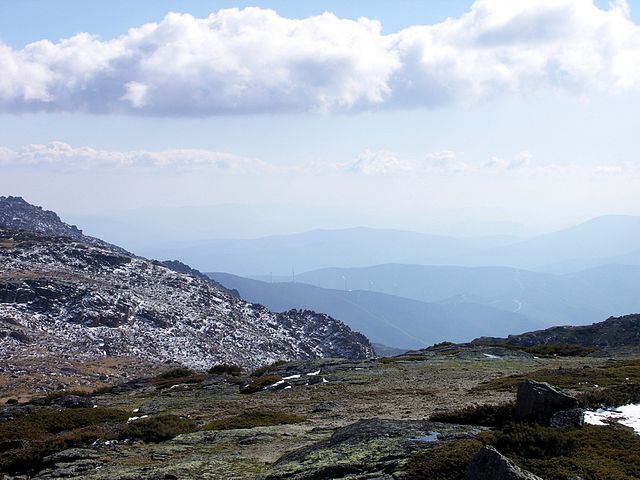5.2.4 Looking with Two Eyes
Course subject(s)
Module 5 – Scale and Detail
The eyes and the brain together form a clever system to help understand the world around us. In scale models this works differently.
With our eyes we capture light from near and far objects.
There are several cues for the eyes to understand which objects are close by and which are further away. The most important is the ‘accommodation’ of the lens. Accommodation is achieved from the contraction and relaxation of ciliary muscles in the eye. When we focus, the lens of our eye will be deformed and our brain knows from the amount of accommodation how far away the object is. This is a cue that works best for nearby objects.
A cue for far away objects is ‘atmospheric perspective’; the increasing amount of fog towards the horizon provides information about how far away things are. The fog makes colours less saturated. The atmospheric perspective is difficult to capture in model photographs, so instead you can use the difference in saturation of colours to manipulate the sense of scale. In contextual models, for example, you can make the object of your design with more saturated (stronger) colours, while the surroundings can be made a bit more greyish. This helps the viewer to read the model and directs the eye to the important points. In render software it is often possible to add fog into the view. This can really help to construct the range of vision so long as the image shows a site where such atmospheric effects are common.

Atmospheric Perspective Serra da Estrela, Portugal CC-BY-SA 2,5 by Joaquim Alves Gaspar.
Other cues for visual depth are ‘occlusion’ and ‘linear perspective’. These depth effects can all be seen with one eye. When we take pictures from a scale model we will not feel the accommodation effect by looking at the picture, but the occlusion of objects and linear perspective work similarly.

Combination of fog, linear perspective and occlusion.
There are a few more cues that gives us depth information: the convergence of our eyes towards the object that we look at. To look at a far away object, for example, a ship at sea, both our eyes are looking at the object in almost parallel lines of sight. However, closer up these lines of sight will converge closer towards the object. The amount of convergence is the first cue when looking with two eyes.

Convering eyes, Eye to Eye, CC-BY 2.0, by OakleyOriginalsFollow,
The final cue is ‘shifting backgrounds’. You can conduct a little experiment: if you hold your index finger ten centimetres in front of your nose first look at it with one eye and then with the other. You will see a shift in the background behind the finger. The convergence of your eyes and the background shift are too big when you look at scale models using both eyes. For example, when you look at a 1:100 model with both eyes it will look like the small object it is. The distance between your eyes would be roughly 7 meters if you would scale the model and your eyes up to 1:1 dimensions. Therefore, you should always close one eye when you look at a scale model.
In Virtual Reality the stereo effect from looking with two eyes is a key factor that makes it so impressive. When we looked at your scale models using a cardboard viewer or the VR goggles we could see them in real scale. Using photogrammetry and viewing the result with two eyes in a computer rendering really helps to get the right impression from the smaller convergence of your eyes and from the appropriate background shift. This is a good technique and can be used to walk into your own design.

Models in Architecture by TU Delft OpenCourseWare is licensed under a Creative Commons Attribution-NonCommercial-ShareAlike 4.0 International License.
Based on a work at https://ocw.tudelft.nl/courses/models-architecture-design-physical-digital-models/.



